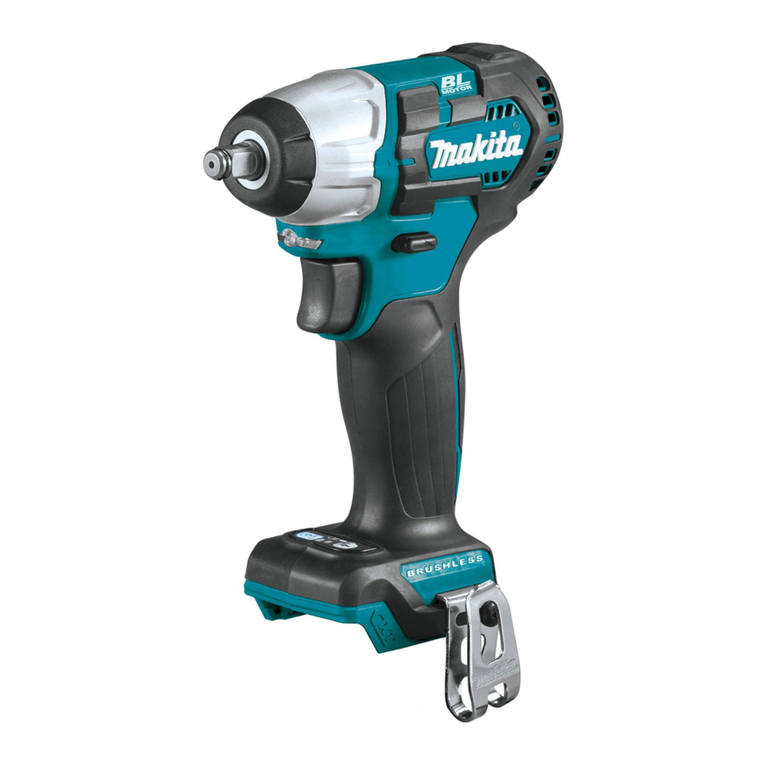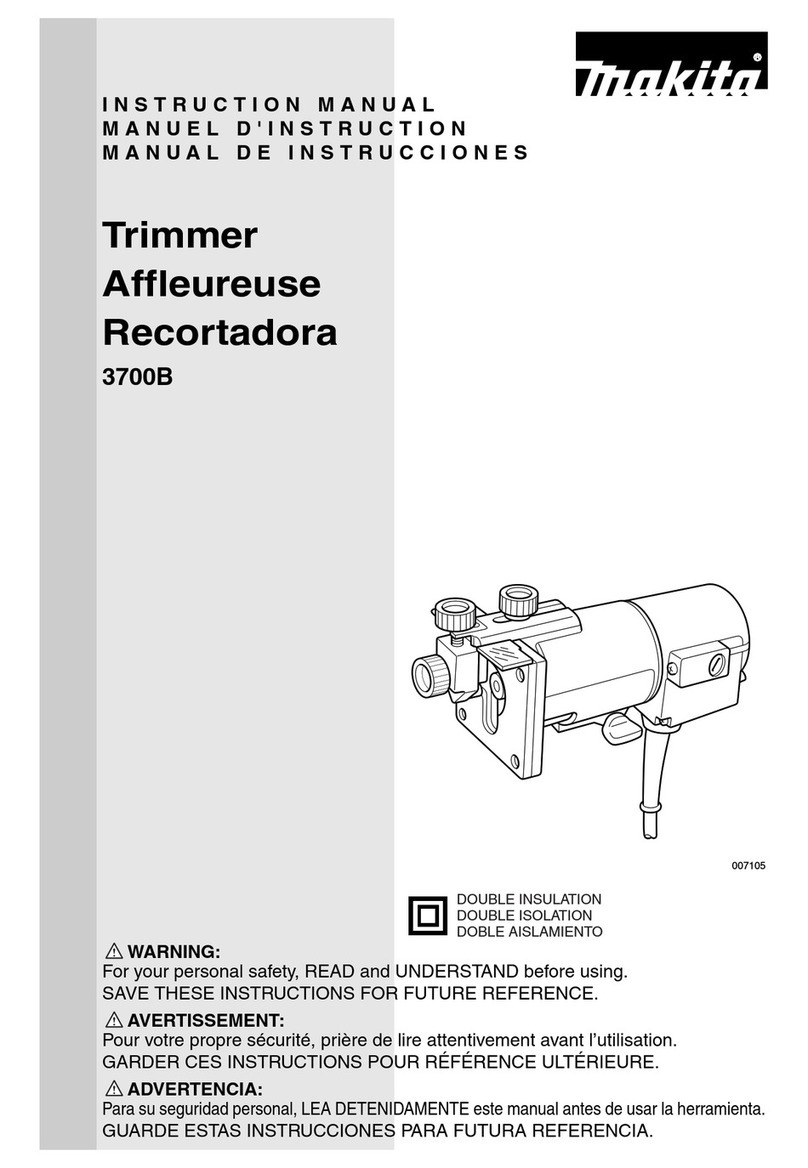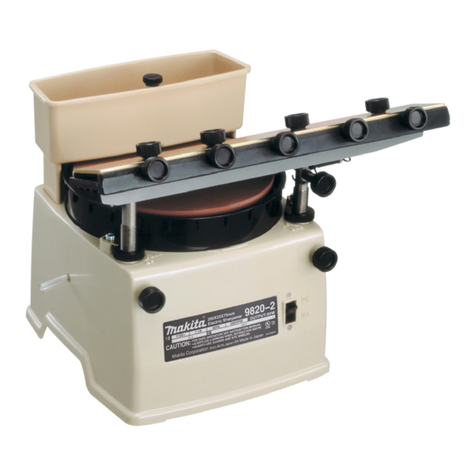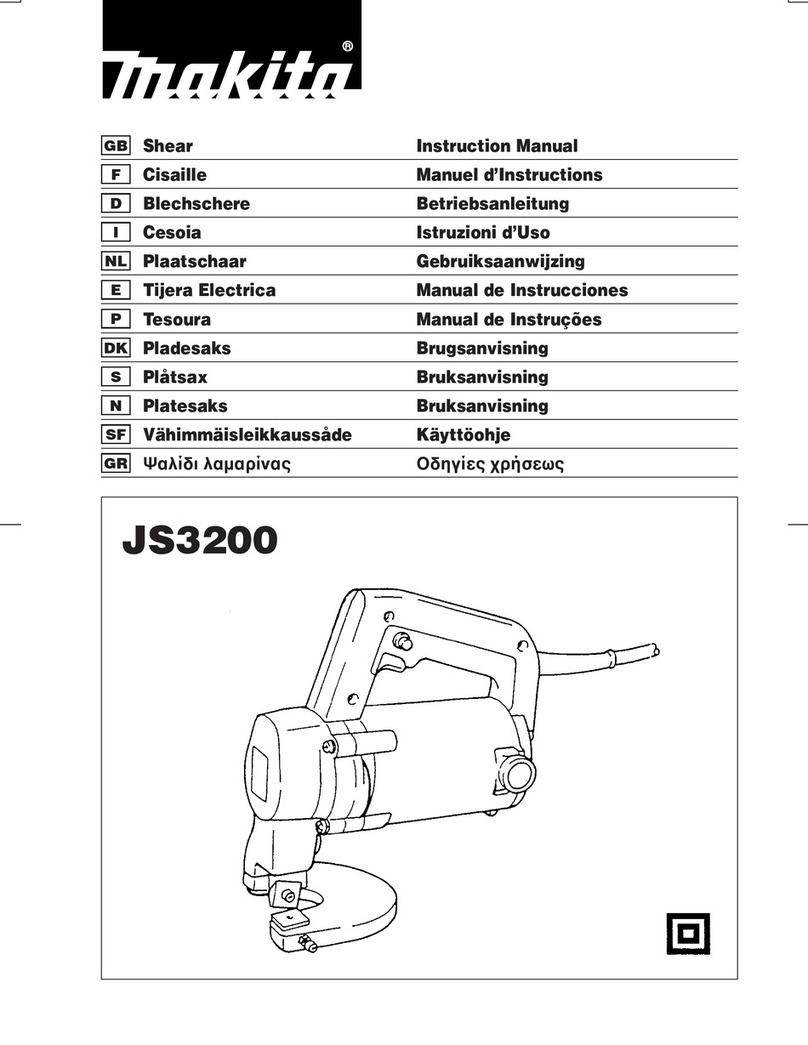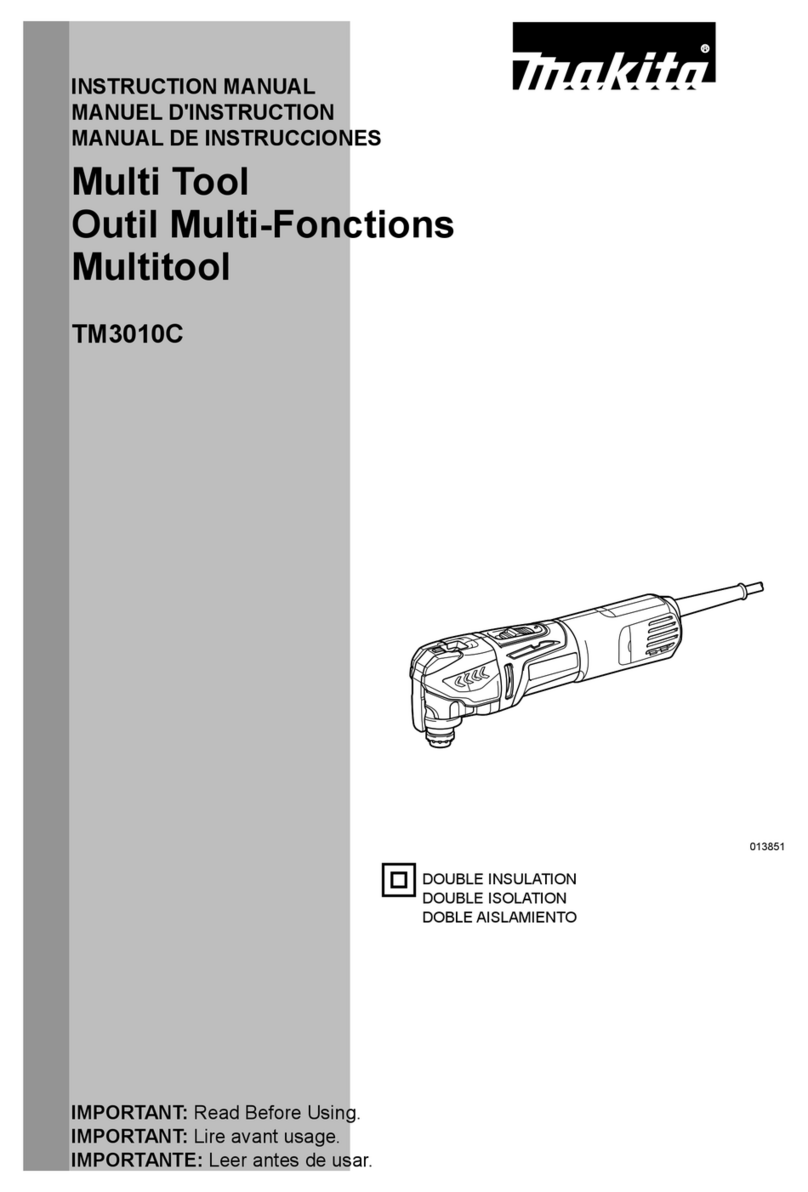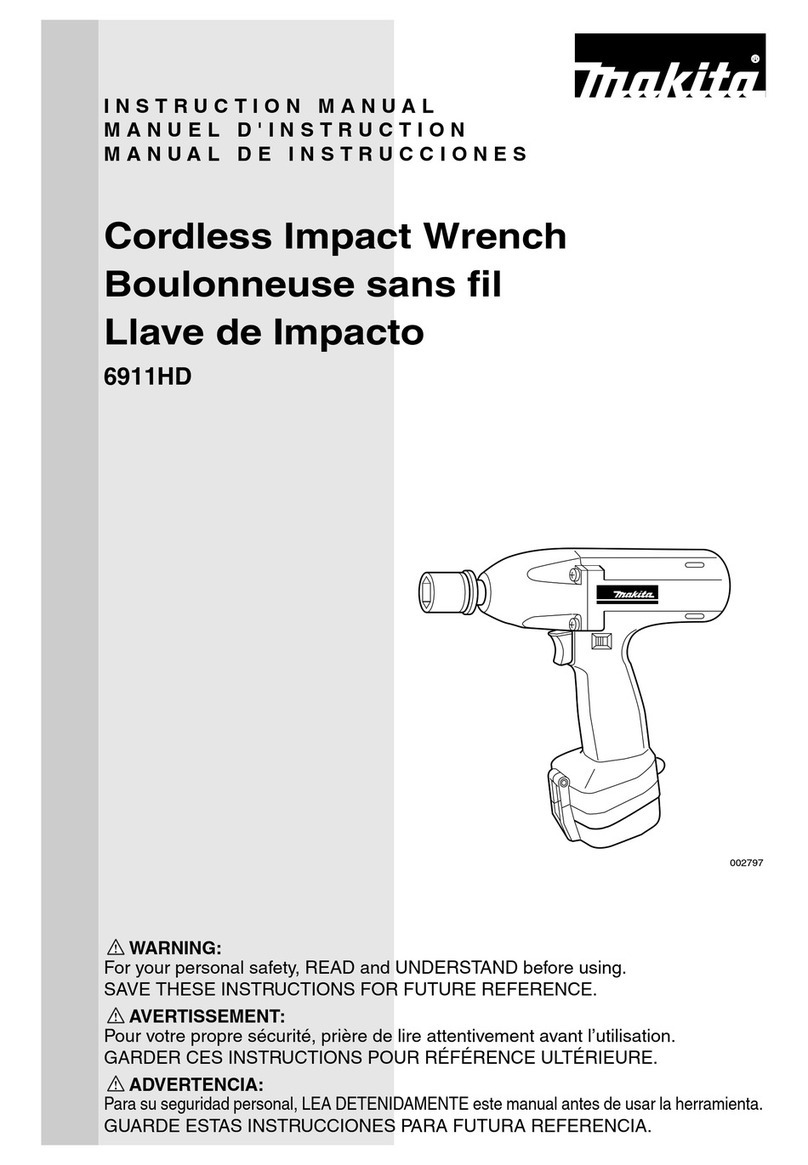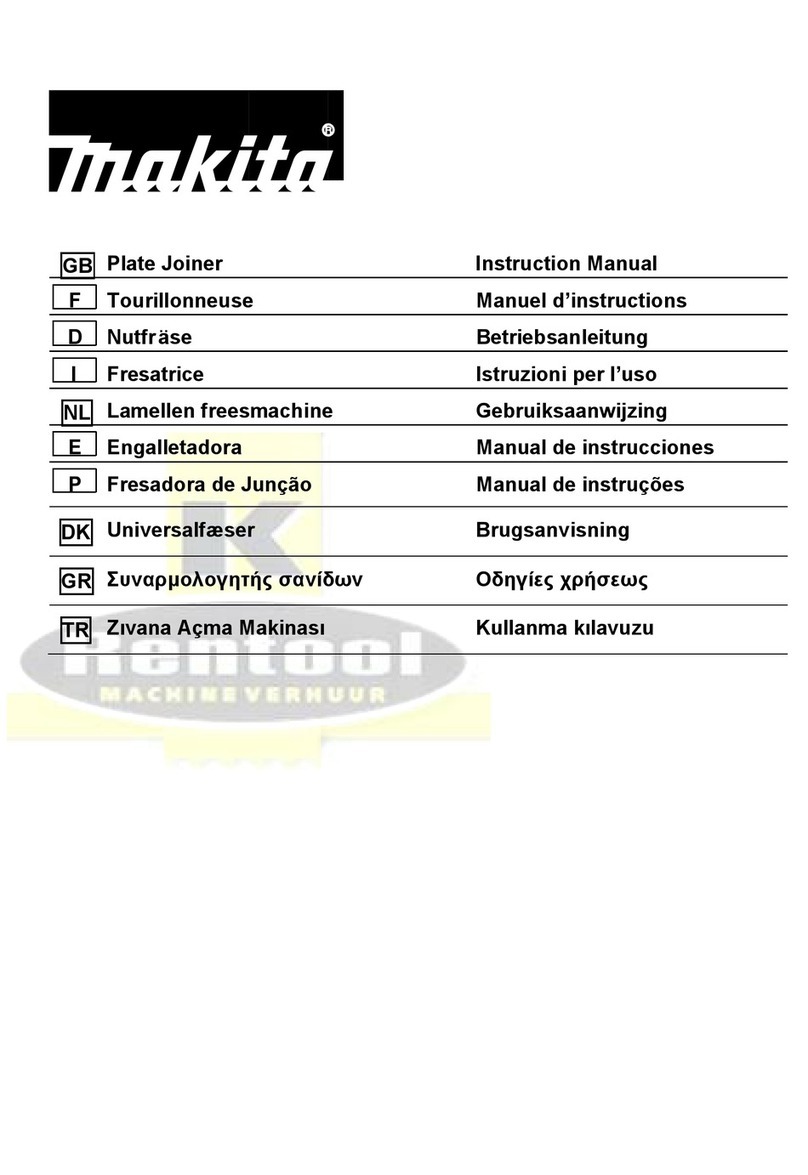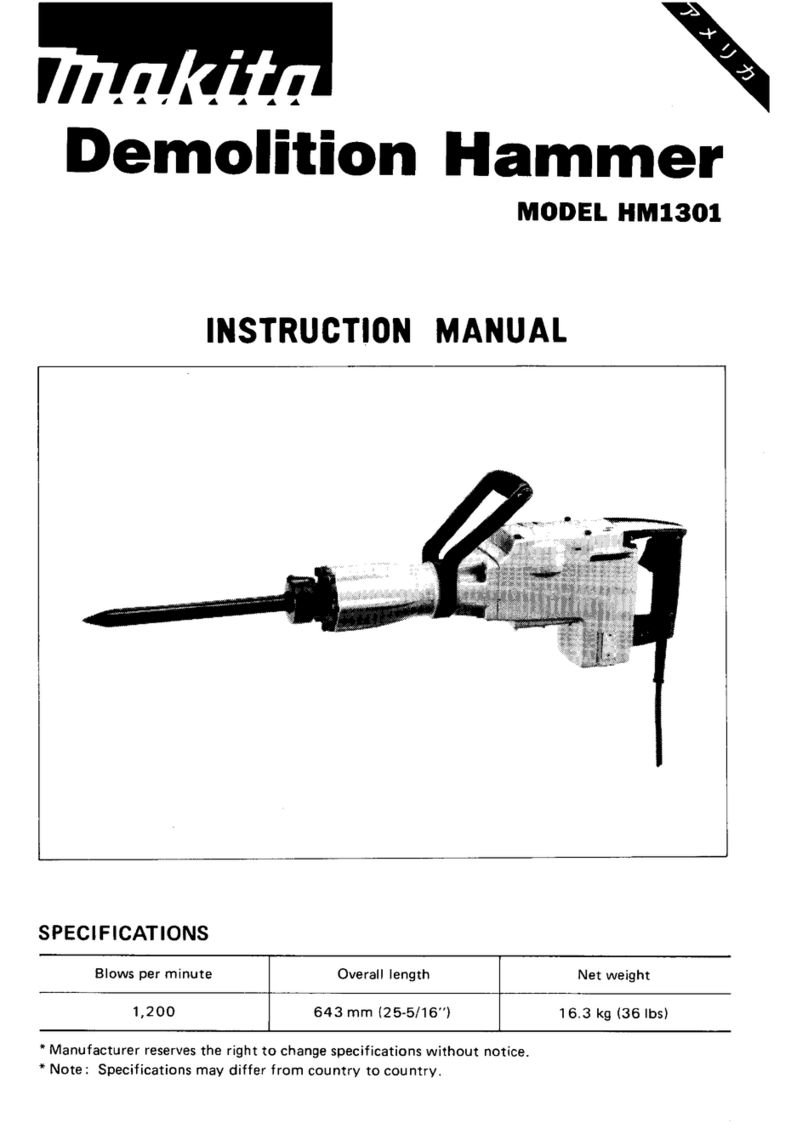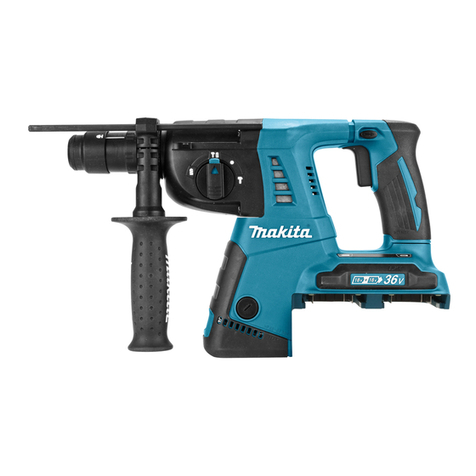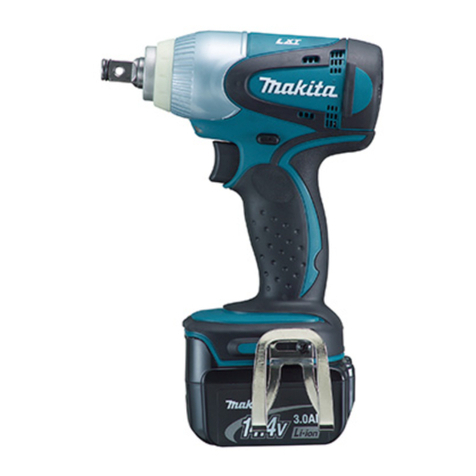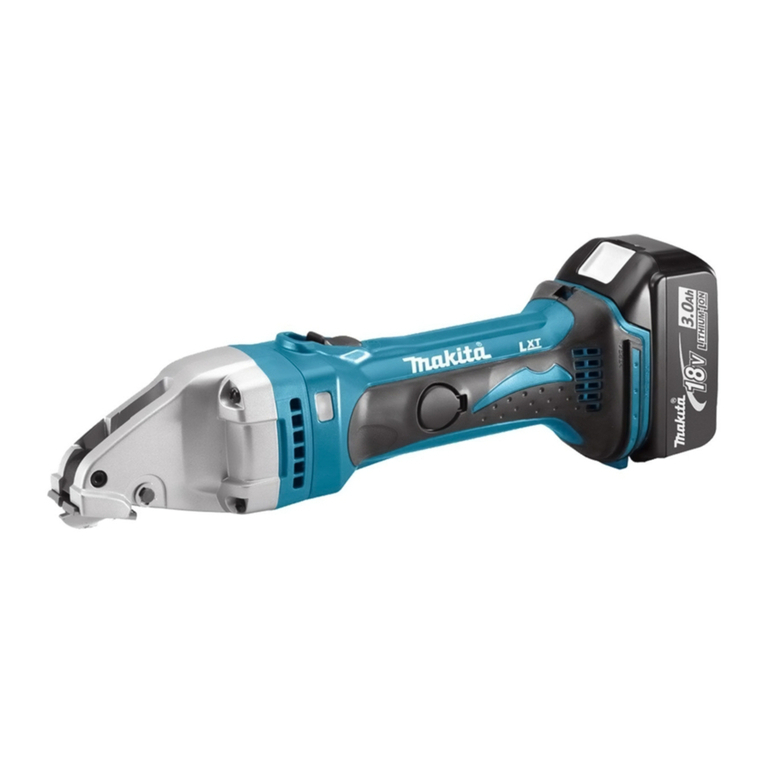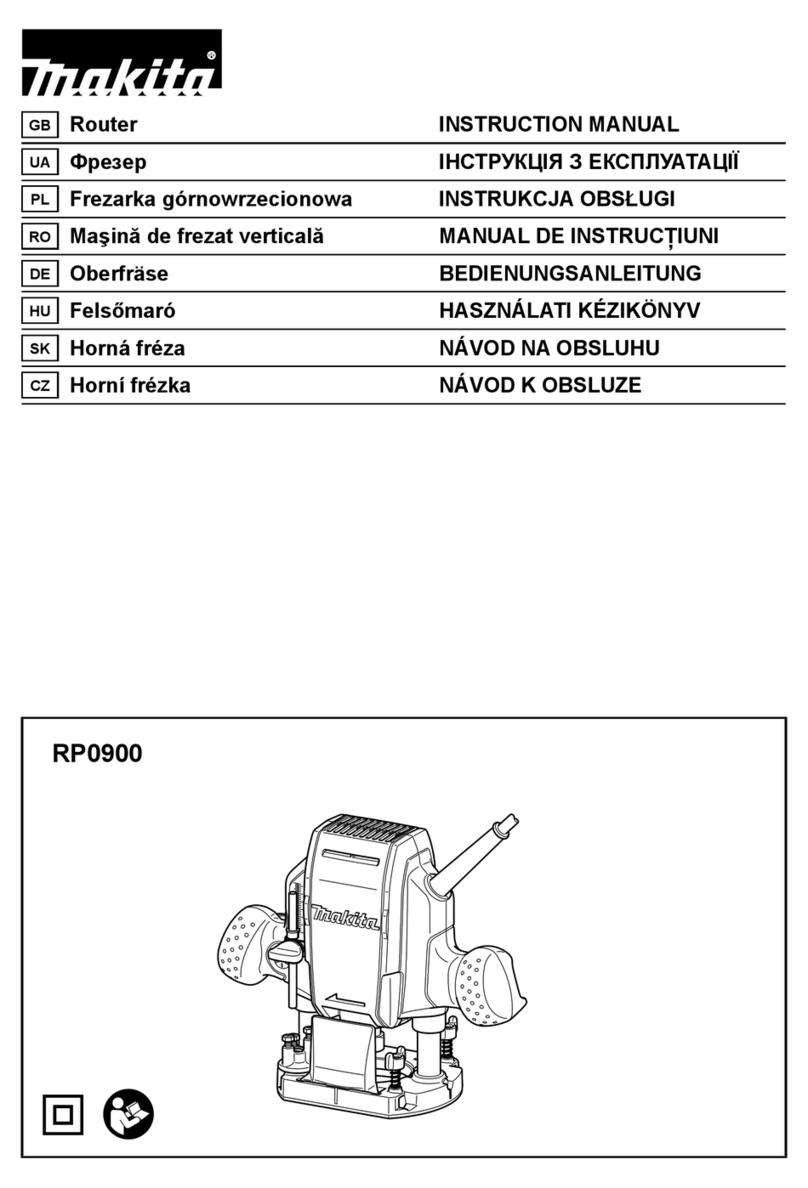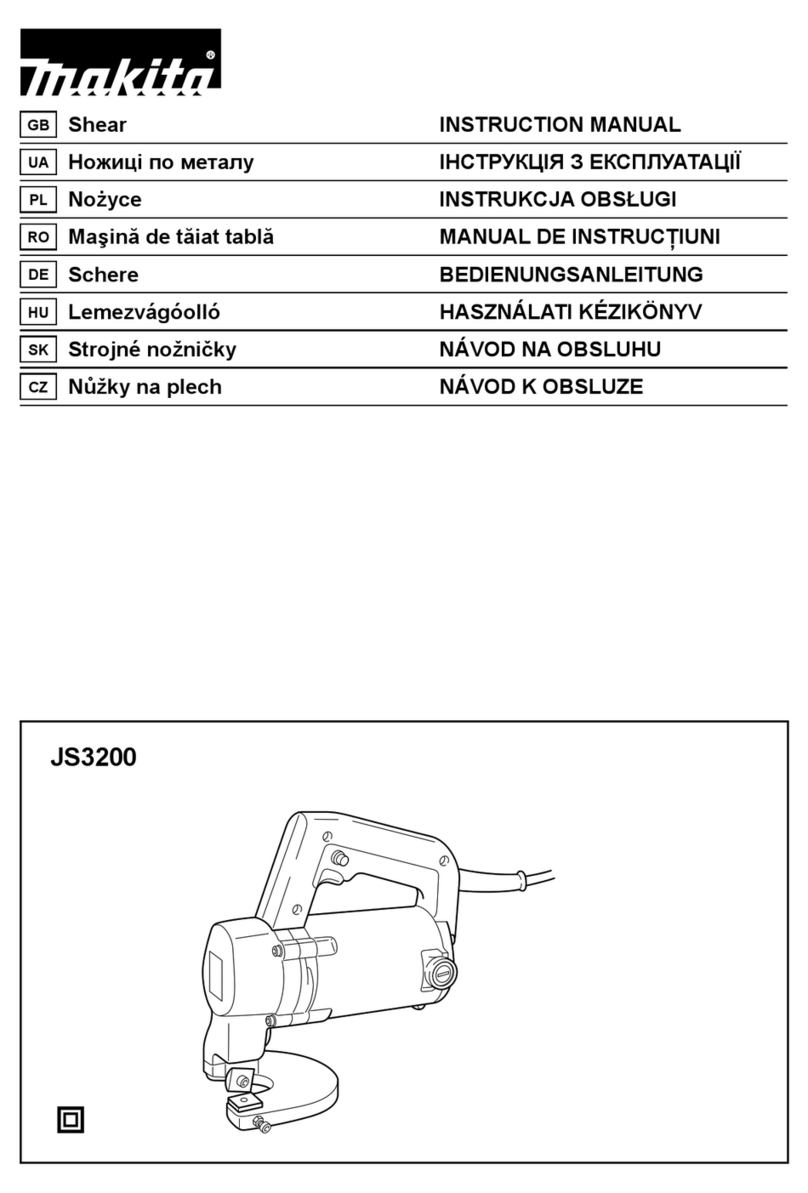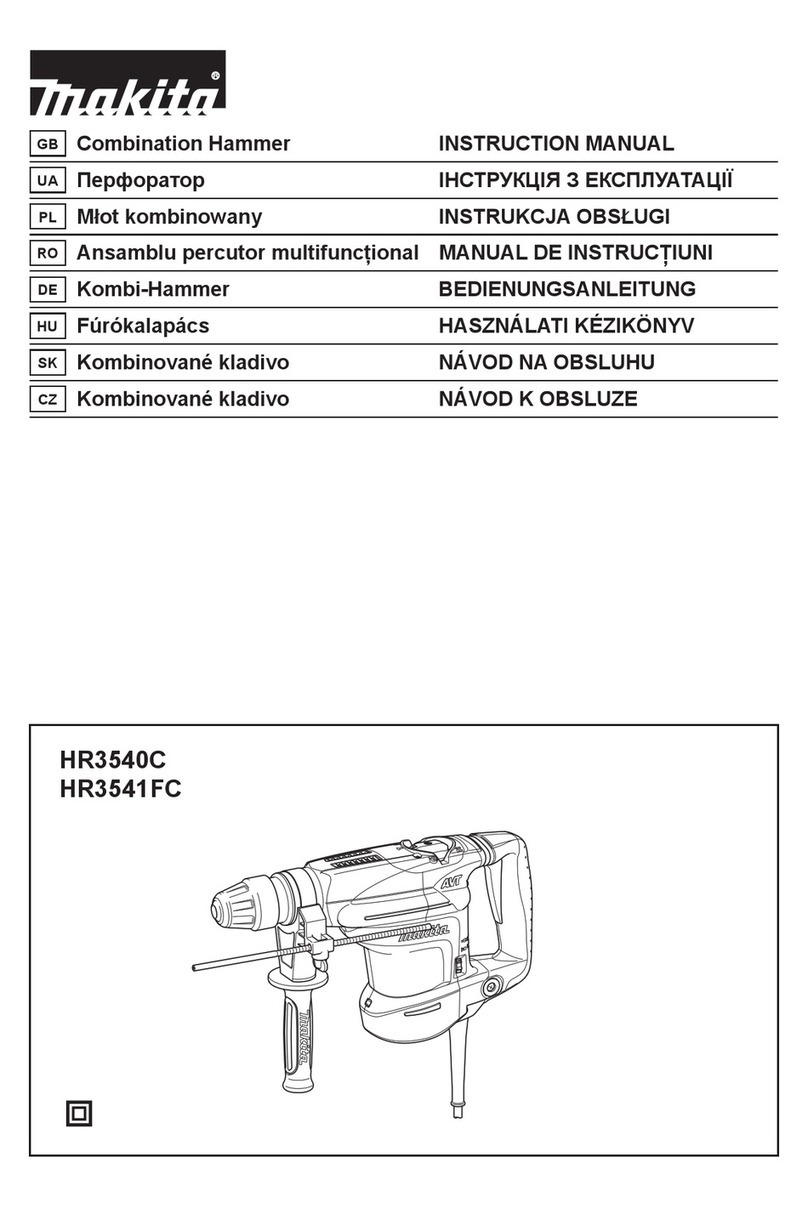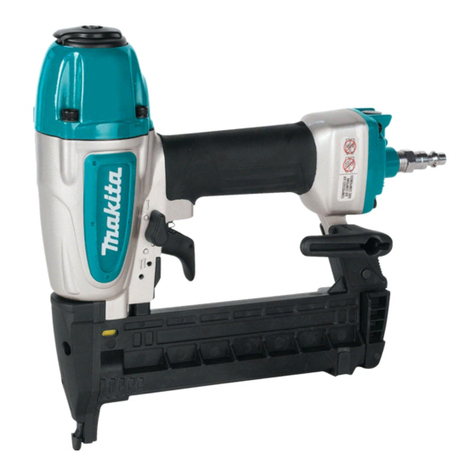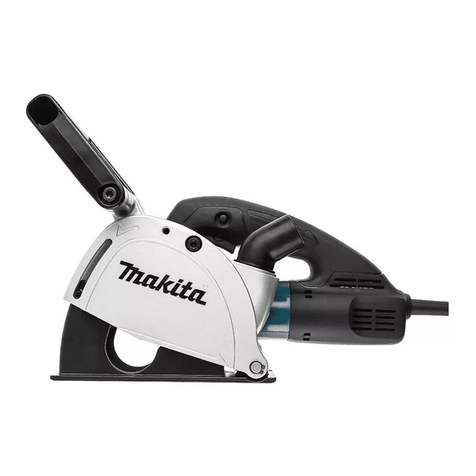
5ENGLISH
Battery tool use and care
1. Recharge only with the charger specied by
the manufacturer. A charger that is suitable for
onetypeofbatterypackmaycreateariskofre
whenusedwithanotherbatterypack.
2. Use power tools only with specically desig-
nated battery packs.Useofanyotherbattery
packsmaycreateariskofinjuryandre.
3. When battery pack is not in use, keep it away
from other metal objects, like paper clips,
coins, keys, nails, screws or other small metal
objects, that can make a connection from one
terminal to another.Shortingthebatterytermi-
nalstogethermaycauseburnsorare.
4. Under abusive conditions, liquid may be
ejected from the battery; avoid contact. If con-
tact accidentally occurs, ush with water. If
liquid contacts eyes, additionally seek medical
help.Liquidejectedfromthebatterymaycause
irritation or burns.
5. Do not use a battery pack or tool that is dam-
aged or modied.Damagedormodiedbatteries
mayexhibitunpredictablebehaviourresultingin
re,explosionorriskofinjury.
6. Do not expose a battery pack or tool to re or
excessive temperature.Exposuretoreortem-
peratureabove130°Cmaycauseexplosion.
7. Follow all charging instructions and do not
charge the battery pack or tool outside the
temperature range specied in the instruc-
tions.Chargingimproperlyorattemperatures
outsidethespeciedrangemaydamagethe
batteryandincreasetheriskofre.
Service
1. Have your power tool serviced by a qualied
repair person using only identical replacement
parts.Thiswillensurethatthesafetyofthepower
tool is maintained.
2. Never service damaged battery packs. Service
ofbatterypacksshouldonlybeperformedbythe
manufacturer or authorized service providers.
3. Follow instruction for lubricating and chang-
ing accessories.
CORDLESS MULTI TOOL SAFETY
WARNINGS
1. This power tool is intended to function for
sawing, cutting, grinding and sanding. Read all
safety warnings, instructions, illustrations and
specications provided with this power tool.
Failuretofollowallinstructionslistedbelowmay
resultinelectricshock,reand/orseriousinjury.
2. Hold power tool by insulated gripping sur-
faces, when performing an operation where
the cutting accessory may contact hidden
wiring.Cuttingaccessorycontactinga"live"
wiremaymakeexposedmetalpartsofthepower
tool "live" and could give the operator an electric
shock.
3. Use clamps or another practical way to secure
and support the workpiece to a stable plat-
form.Holdingtheworkbyhandoragainstyour
bodyleavesitunstableandmayleadtolossof
control.
4. Always use safety glasses or goggles.
Ordinary eye or sun glasses are NOT safety
glasses.
5. Avoid cutting nails. Inspect workpiece for any
nails and remove them before operation.
6. Hold the tool rmly.
7. Make sure the application tool is not contact-
ing the workpiece before the switch is turned
on.
8. Keep hands away from moving parts.
9. Do not leave the tool running. Operate the tool
only when hand-held.
10. Always switch off and wait for the blade to
come to a complete stop before removing the
blade from the workpiece.
11. Do not touch the application tool or the work-
piece immediately after operation; they may be
extremely hot and could burn your skin.
12. Do not operate the tool at no-load
unnecessarily.
13. Always use the correct dust mask/respirator
for the material and application you are work-
ing with.
14. Some material contains chemicals which may
be toxic. Take caution to prevent dust inhala-
tion and skin contact. Follow material supplier
safety data.
15. This tool has not been waterproofed, so do not
use water on the workpiece surface.
16. Ventilate your work area adequately when you
perform sanding operations.
17. Use of this tool to sand some products, paints
and wood could expose user to dust contain-
ing hazardous substances. Use appropriate
respiratory protection.
18. Be sure that there are no cracks or breakage
on the pad before use. Cracks or breakage
may cause a personal injury.
19. Do not use accessories which are not speci-
cally designed and recommended by the tool
manufacturer.Justbecausetheaccessorycan
beattachedtoyourpowertool,itdoesnotassure
safe operation.
20. Wear personal protective equipment.
Depending on application, use face shield,
safety goggles or safety glasses. As appro-
priate, wear hearing protectors, gloves and
workshop apron capable of stopping small
abrasive or workpiece fragments.Theeyepro-
tectionmustbecapableofstoppingyingdebris
generatedbyvariousoperations.Thedustmask
orrespiratormustbecapableofltratingparticles
generatedbyyouroperation.Prolongedexposure
tohighintensitynoisemaycausehearingloss.
21. Keep bystanders a safe distance away from
work area. Anyone entering the work area
must wear personal protective equipment.
Fragmentsofworkpieceorofabrokenaccessory
mayyawayandcauseinjurybeyondimmediate
area of operation.
22. Never lay the power tool down until the acces-
sory has come to a complete stop. The spinning
accessorymaygrabthesurfaceandpullthe
powertooloutofyourcontrol.


